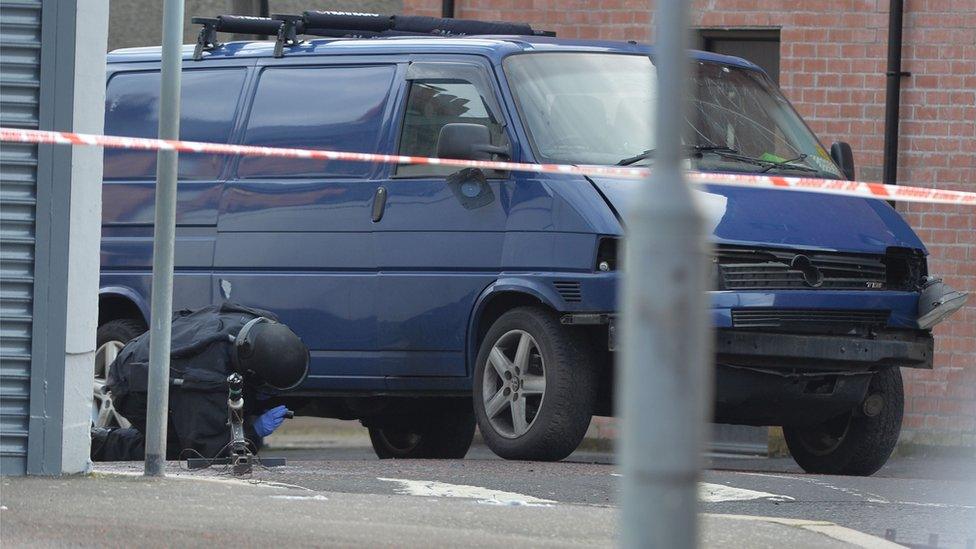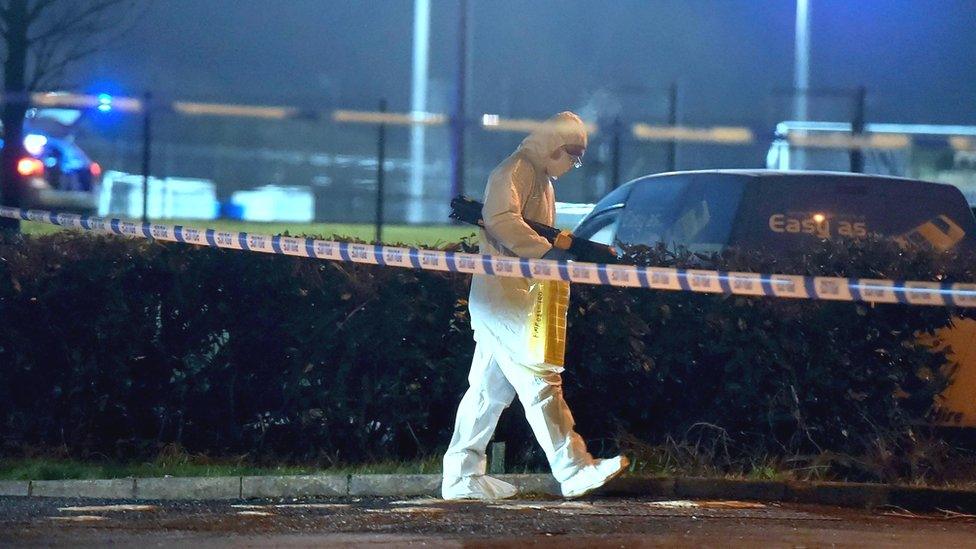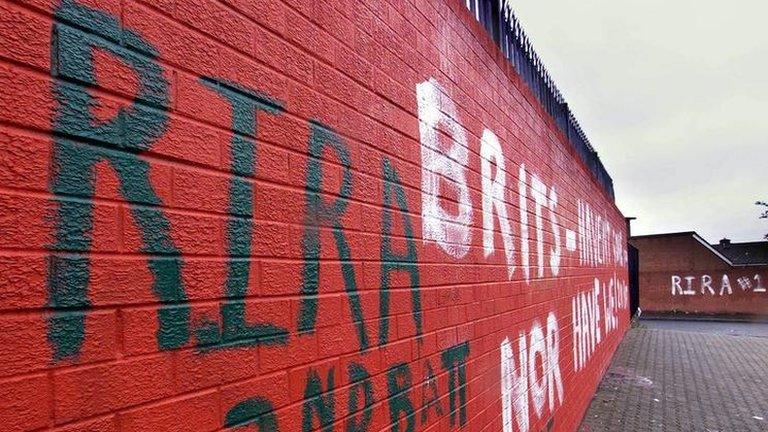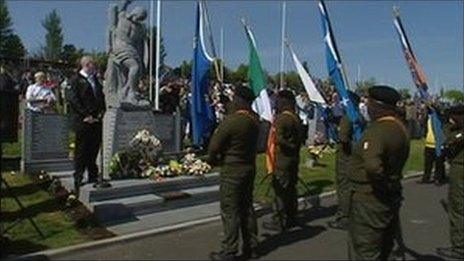Northern Ireland terror threat level raised in Great Britain
- Published

Prison officer Adrian Ismay died after a booby-trap bomb attack in east Belfast in March
The threat level from Northern Ireland-related terrorism in Great Britain has gone up from moderate to substantial.
It means an attack in England, Scotland or Wales is "a strong possibility".
Home Secretary Theresa May said the level, set by security service MI5, "reflects the continuing threat from dissident republican activity".
The level for Northern Ireland-related terrorism in Northern Ireland remains severe, meaning an attack is "highly likely".
Despite the increase in the threat level from Northern Ireland-related terrorism in Great Britain, it remains lower than the threat to the entire UK from international terrorism.
This is set at severe - the second-highest of the five ratings used, external.
BBC security correspondent Frank Gardner said it had been 15 years since the last Northern Ireland-related attack in Great Britain, but there was now a "real fear" in the security services that deadly tactics of the past would be used again.
But he said the "far bigger" threat to Great Britain came from the Islamic State group and its supporters.
Mrs May confirmed the change of threat level relating to Great Britain - meaning three of the four countries of the UK - in a written statement to Parliament.
She gave no further details of any intelligence that had led to the level being changed.
"As a result of this change, we are working closely with the police and other relevant authorities to ensure appropriate security measures are in place," she wrote.

Analysis

By Vincent Kearney, NI home affairs correspondent
The escalation of the level of threat dissident republicans pose to potential targets in Great Britain means that the security service MI5 believes their capacity and capability has grown significantly.
The move follows years of briefings by the police and security sources which said that while dissidents had a high level of intent to mount attacks outside Northern Ireland, they lacked the capacity or capability to do so.
That has now changed.
The Police Service of Northern Ireland warned earlier this year that dissidents have shown a range of capabilities over the past 18 months which they described as deeply concerning.
These include the use of home made bombs, referred to by the police as Improvised Explosive Devices, improvised rocket launchers, close quarter shootings, and under vehicle bombs.

In a separate statement, external, Mrs May said dissident republicans "command little support", and the "vast majority" of people wanted peace.
She said it was "sensible" for the public in Great Britain to be vigilant, but said the threat level should "not affect how we go about our daily lives".
Democratic Unionist MP Jeffrey Donaldson is seeking an urgent Privy Council briefing to discuss the new security assessment.
"It is evident that dissident republicans are now active in Great Britain and are examining potential targets. Obviously that's a matter of concern," he said.
"We had no prior indication that the threat level had been increasing. In Northern Ireland, the threat has been severe for some time but quite clearly this is a new development in terms of dissident republican activity."
Assistant Chief Constable Will Kerr, of the Police Service of Northern Ireland, said the change in threat level was "about increasing awareness and encouraging vigilance".
At Easter the New IRA, the group responsible for the murder of prison officer Adrian Ismay in March, warned that its members were "determined to take the war to the age-old enemy of our nation".
Police have said the killing of Michael McGibbon in north Belfast in April carried the hallmarks of a paramilitary murder.
The threat level for Northern Ireland-related terrorism in Great Britain was raised from moderate to substantial in 2010, then reduced back to moderate in 2012.
The top threat level is critical, which means an attack is "expected imminently".
- Published14 August 2023

- Published24 October 2012

- Published12 July 2011

- Published25 September 2010
